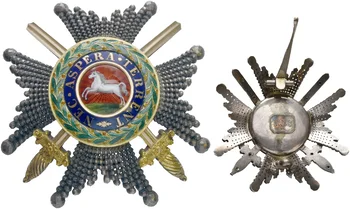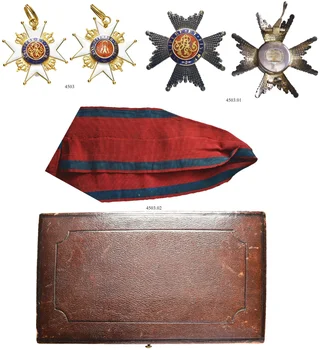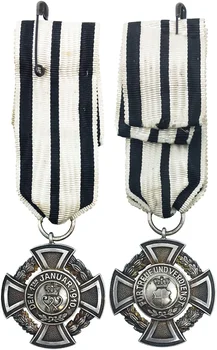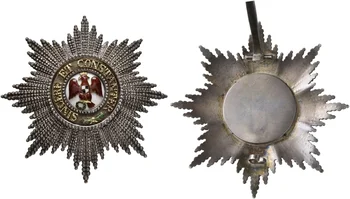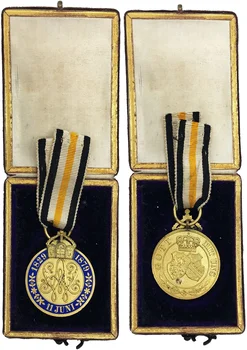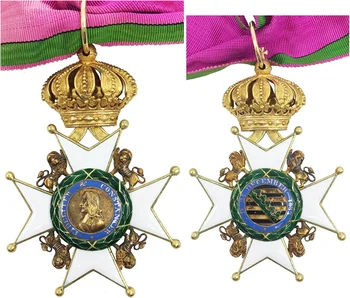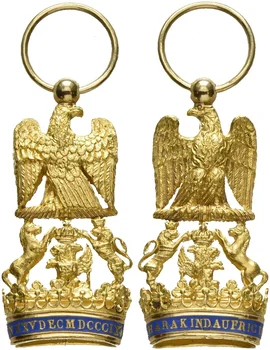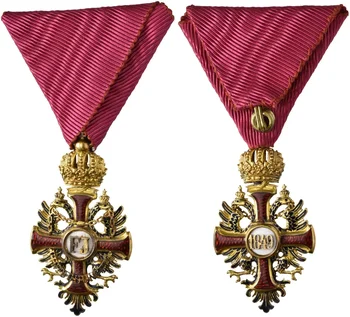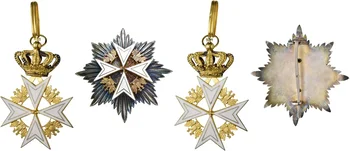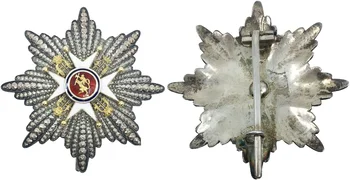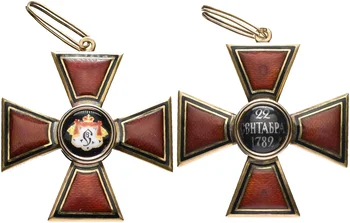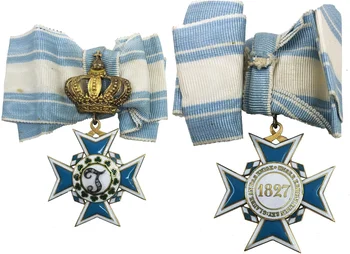 1
1 Order of Theresia. Cross for the ladies of the order, special edition with diamonds on the cipher „T“, probably manufacturing from the second half of the 19th century, gold and enamels, the cipher set with eight old cut diamonds and diamond roses, the surmounting crown silver gilt, total weight (with bow) 22.2 g, slight cracks, chipping and repairs in the white enamels of obverse and reverse, with old lady’s bow, without pin. OEK22 446.
Theresien-Orden. Kreuz der Ordensdamen, Ausgabe mit Diamanten im Monogramm „T“, Anfertigung wohl aus der zweiten Häfte des 19. Jahrhunderts, Gold emailliert, das Monogramm besetzt mit acht Diamanten in Altschliff und Diamantrosen, die Kronen-Überhöhung Silber vergoldet, Gesamtgewicht (mit Schleife) 22.2 g, min. Sprünge, Chips und Reparaturen in der weißen Emaille von Avers und Revers, an originaler alter Damenschleife, ohne Nadel. OEK22 446.
Sehr schön / Very fine.
(EUR 1’400 / USD 1’650)
The one-class, 2nd Bavarian order for ladies (after the Order of Saint Elisabeth) was instituted by Queen Therese of Bavaria (born Princess of Saxe-Hildburghausen, 1792-1854, since 1825 wife of King Ludwig I), on December 12, 1827 as an order for the „daughters of the Bavarian Nobility“ [Töchter des bayerischen Adels]. The order was given to 15 or 16 ordinary ladies of the order, who received an annual pension [Präbende] and to an unlimited number of ladies of honour of the order. According to the statutes, the ordinary insignia did not have diamonds, but from the beginning on there existed pieces with the cipher set with diamonds, and in rare cases also with the surmounting crown set in diamonds. The purpose of those is not known. With the end of monarchy in Bavaria in November 1918, the order ceeded to exist as an order of the State of Bavaria, but until today it is conferred as a female dynastical order of the Royal family of the Dukes of Bavaria.
| Startpreis | 1’500 CHF |
| Zuschlag |
Dieses Los steht nicht mehr zum Verkauf.
